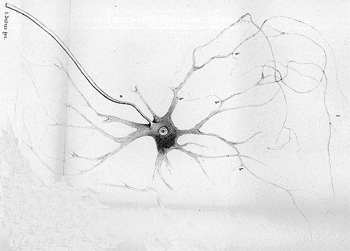Difference Between Axons and Dendrites
 Axons vs Dendrites
Axons vs Dendrites
Have you ever wondered what sensations and perceptions involve? The sensations we feel are actually dictated by our brain, based on the impulses and stimulation it receives. These impulses are in the form of electrochemical signals that are passed from one nerve cell to the next, until they reach our brain for calculation and response. This is nervous system 101.
The nervous system is such an interesting and broad subject, and one of its disciplines is the understanding of nerve cells, or more simply called, neurons. There are two parts of nerve cells involved in the conduction of these nerve impulses. They are the axons and the dendrites.
Dendrites are branched projections of neurons; its name comes from the Greek word ‘Dendron’, which means ‘Tree’, and is based on its evident tree-like appearance. They are protoplasmic extensions of nerve cells, and operate as conductors of electrochemical stimuli received from neighboring cells. The impulses they receive are carried inwards and towards the soma, or cell body.
Impulses are received by dendrites via synapses. They are situated at different points all over the dendritic arbor. Most neurons have many of these protoplasmic protrusions, although they are rather short. They are heavily branched in structure.
Axons are also called nerve fibers, as they appear elongated and slender. Like dendrites, they are also protoplasmic projections of nerve cells, or neurons, and their primary purpose is to conduct electrochemical impulses away from the cell body of neurons. Most nerve cells only have a single axon.
Axons extend from the soma to its terminal endings. Neural signals are transmitted through them after they have entered the soma of the neuron. Larger axons are said to transmit information signals more quickly. Some axons are myelinated (i.e. covered by a fatty substance identified as myelin). The myelin coverings are insulators, and with their presence, axons are said to transmit more quickly.
Basically, axons’ role is to transmit signals, and dendrites to receive such signals. However, these assertions are in a general sense, as there are some exceptions. Other distinguishing physical characteristics of the axons and dendrites, besides the length and branching, are their shapes. Dendrites tube-like shape usually tapers, while the radius of axons remains constant.
Summary:
1. Dendrites receive electrochemical impulses from other neurons, and carry them inwards and towards the soma, while axons carry the impulses away from the soma.
2. Dendrites are short and heavily branched in appearance, while axons are much longer.
3. Generally, dendrites receive neuron signals, and axons transmit them.
4. Most neurons have a lot of dendrites and only have one axon.
5. Dendrites’ radius tapers, while axons’ remain constant.
- Difference Between Lymphoma and Leukemia - March 7, 2024
- Difference Between CP and CPK - June 8, 2010
- Difference Between PPTP and L2TP - June 7, 2010
